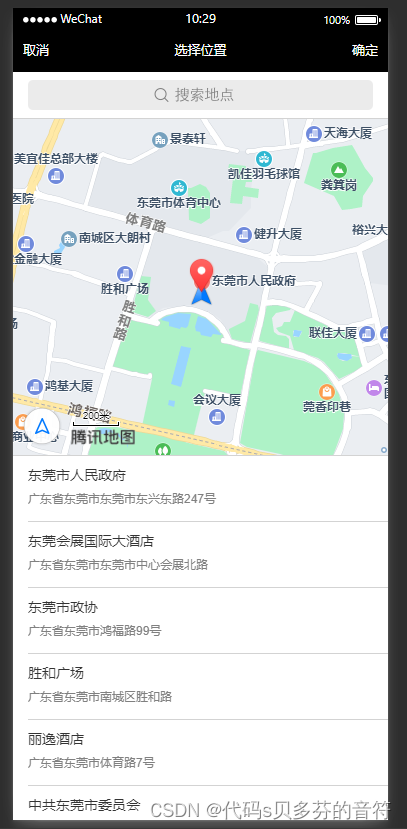当前位置:网站首页>Attribute keywords ondelete, private, readonly, required
Attribute keywords ondelete, private, readonly, required
2022-07-07 14:30:00 【User 7741497】
The first 105 Chapter Attribute keyword - OnDelete
Specify the action to be taken in the current table when deleting related objects . This keyword is only applicable to the cardinality Cardinality Designated as “ Father ” or “ One ” Relationship properties of . Its use is invalid in all other contexts .
usage
To specify the action to be taken in the current table when deleting related objects , Please use the following syntax :
Relationship relname As classname [ Cardinality = cardinality, Inverse = inverse, OnDelete = ondelete ]; among ondelete Is one of the following values . In this discussion , Related records are records or objects belonging to the other party of the relationship , A reference record is a record or object of the party to the relationship .
cascadecascade — When deleting related records , The reference records in this table will also be deleted .noactionNo operation — When trying to delete related records , Attempts will fail .setdefault— When deleting related records , The reference records in this table will be set to their default values .setnull— When deleting related records , The reference records in this table will be set tonull.
Detailed explanation
This keyword defines the reference operation that occurs when a record is deleted at the other end of the relationship .
Default
If you ignore this keyword , be :
- about
CardinalityCardinality is the parent relationship ,OnDeleteIt's cascading . in other words , When deleting the parent record , By default , The associated child record will be deleted . - For cardinality 1 The relationship between ,
OnDeletebynoaction. in other words , When trying to delete “ One ” When recording , By default , If another table has any records pointing to it , Try and fail .
Example
Class MyApp.Employee Extends %Persistent {
...
Relationship Employer As MyApp.Company [ Cardinality = one, Inverse = Employees, OnDelete = cascade ];
} This example shows the one to many relationship between the company and employees . As shown in the figure ,Cardinality It means that the company is related “one”, and OnDelete Indicates the impact of deleting the company on its employees . because OnDelete The value of is cascade, When deleting a company , Its effect is cascading , Employees will also be deleted .
The first 106 Chapter Attribute keyword - Private
Specify whether the property is private ( Can only be used by methods of this class or its subclasses ).
usage
To specify that the property is private , Please use the following syntax :
Property name As classname [ Private ]; otherwise , Ignore the keyword or Not Put before the keyword .
Detailed explanation
Private class members can only be represented by this class ( Or its subclass ) The method of using .
Private properties are not displayed in directory information , And not by SELECT * Query returned . however , Can be in SQL Explicitly reference and use private attributes in queries .
A subclass inherits Private The value of the keyword , It cannot be rewritten .
stay IRIS in , Private properties are always inherited , And visible to subclasses of classes that define attributes ; Other languages often call these protected properties .
Default
If you omit this keyword , Then this property is not private .
The first 107 Chapter Attribute keyword - ReadOnly
The specified attribute is read-only , This limits the way its value is set .
usage
To specify that the attribute is read-only , Please use the following syntax :
Property name As classname [ ReadOnly ]; otherwise , Omit this keyword or put the word Not Put in front of the keyword .
Important note : Do not use ReadOnly keyword .
Detailed explanation
This keyword specifies that the value of this property cannot be set by using an object reference . If you use an object reference to set the value of a read-only property , for example :
set oref.Name = "newvalue" Then it will appear at runtime <CANNOT SET THIS PROPERTY> error .
Again , When the attribute is defined as read-only , Corresponding SQL The fields in the table are also defined as read-only . Cannot pass SQL Statement to explicitly insert or update read-only fields . Trying to do this will lead to SQL error ,SQLCODE by -138.
You can specify the value of the read-only attribute in the following ways :
- adopt
InitialExpressionkeyword . - adopt
SQLComputeCodekeyword .
Please note that , These technologies have specific limitations .
Be careful
If the attribute is marked as read-only and required required, Please pay attention to object access and SQL The following behavioral differences between visits :
- When saving objects , IRIS Properties will not be validated . It means IRIS Ignored the
Requiredkeyword . - When inserting or updating records , IRIS Yes, it will
Requiredkeyword .
Default
If you omit this keyword , Then the attribute is not read-only .
The first 108 Chapter Attribute keyword - Required
For persistence classes , The value of the specified attribute must be given a value first , Then it can be stored to disk . For enabled XML Class , It is necessary to specify the element to which the attribute is mapped .
usage
To specify attributes is required required Of , Please use the following syntax :
Property name As classname [ Required ]; otherwise , Omit this keyword or put the word Not Put in front of the keyword .
Detailed explanation
For persistent classes , This keyword specifies that before the containing object can be stored on disk , Attribute must be given a value ; If the attribute has no value , An error will occur .
- If the property is of type
%Stream, Then the stream cannot be empty . in other words , If%IsNull()Method returns 0, The flow attribute is considered to have a value . - For expansion
%XML.AdaptorClass , This keyword affects the correspondingXMLframework . If the attribute is markedREQUIRED, Then the corresponding element in the pattern does notminOccurs=“0”, Therefore, it is considered necessary .
In a subclass , Optional attributes can be marked as required , But not vice versa .
Be careful
If the attribute is marked as read-only and required required, Please pay attention to object access and SQL The following behavioral differences between visits :
- When saving objects , IRIS Properties will not be validated . It means IRIS Ignored the
Requiredkeyword . - When inserting or updating records , IRIS Yes, it will
Requiredkeyword .
Default
If you omit this keyword , The attribute is not required .
边栏推荐
- Selenium库
- 【立体匹配论文阅读】【三】INTS
- Demis Hassabis谈AlphaFold未来目标
- [untitled]
- The longest ascending subsequence model acwing 1014 Mountaineering
- When FC connects to the database, do you have to use a custom domain name to access it outside?
- bashrc与profile
- Excuse me, does PTS have a good plan for database pressure measurement?
- Beginner JSP
- 数据湖(九):Iceberg特点详述和数据类型
猜你喜欢

Pert diagram (engineering network diagram)

Simple use of websocket

SAKT方法部分介绍

Cvpr2022 | backdoor attack based on frequency injection in medical image analysis

常用數字信號編碼之反向不歸零碼碼、曼徹斯特編碼、差分曼徹斯特編碼

JS get the current time, month, day, year, and the uniapp location applet opens the map to select the location

Navigation — 这么好用的导航框架你确定不来看看?

Introduction to sakt method

The longest ascending subsequence model acwing 1012 Sister cities

OAuth 2.0 + JWT 保护API安全
随机推荐
UML state diagram
WPF DataGrid realizes the UI interface to respond to a data change in a single line
C # switch pages through frame and page
数据流图,数据字典
交换机和路由器的异同
PyTorch模型训练实战技巧,突破速度瓶颈
Environment configuration
用例图
Demis hassabis talks about alphafold's future goals
Leetcode - Sword finger offer 05 Replace spaces
Demis Hassabis谈AlphaFold未来目标
CSMA/CD 载波监听多点接入/碰撞检测协议
【立体匹配论文阅读】【三】INTS
MRS离线数据分析:通过Flink作业处理OBS数据
Excuse me, when using Flink SQL sink data to Kafka, the execution is successful, but there is no number in Kafka
今日睡眠质量记录78分
Excuse me, as shown in the figure, the python cloud function prompt uses the pymysql module. What's the matter?
Mmkv use and principle
bashrc与profile
The longest ascending subsequence model acwing 1014 Mountaineering